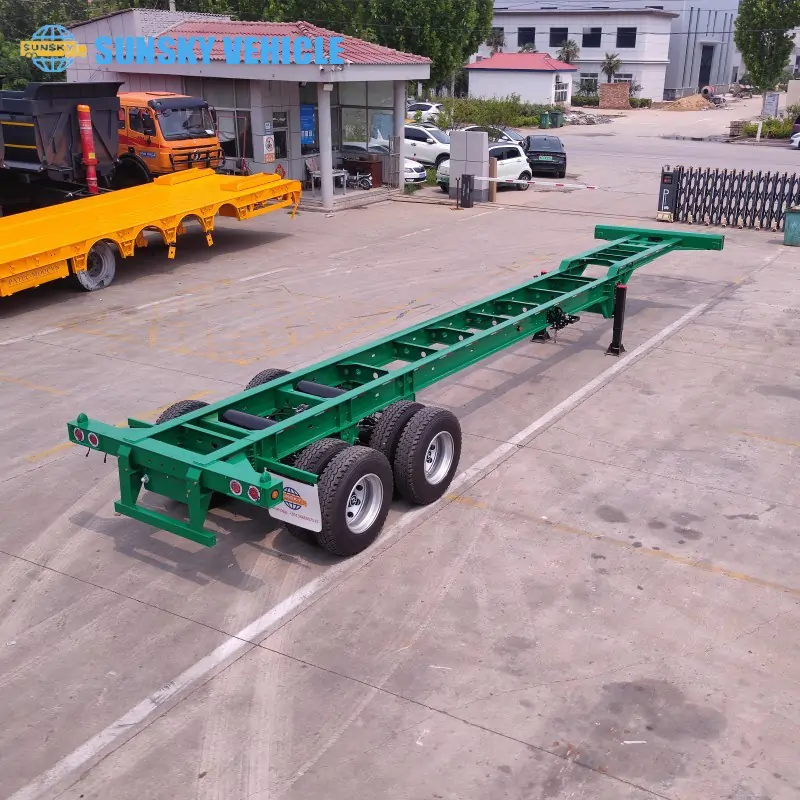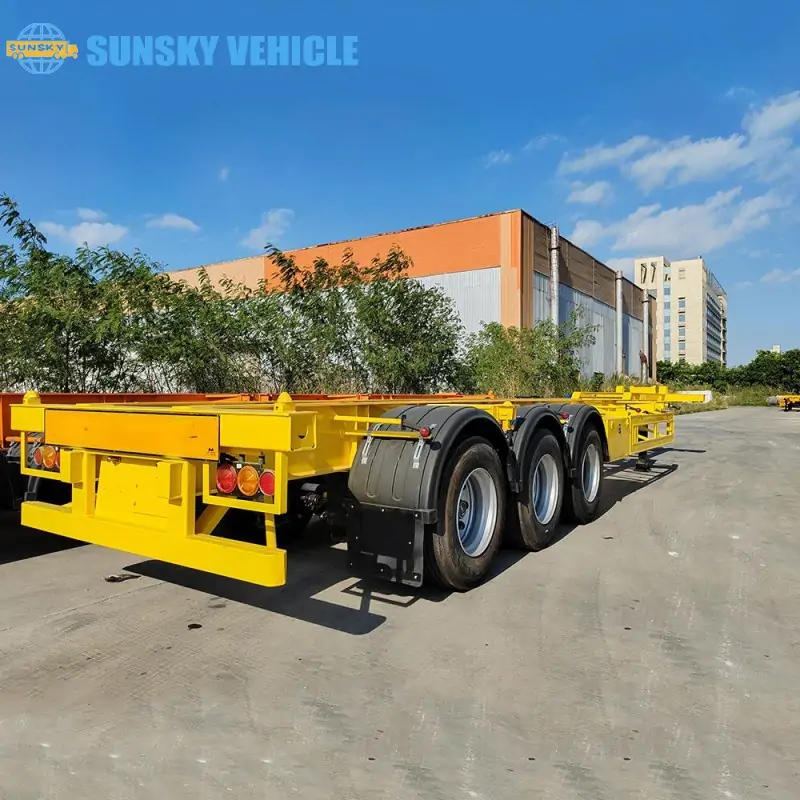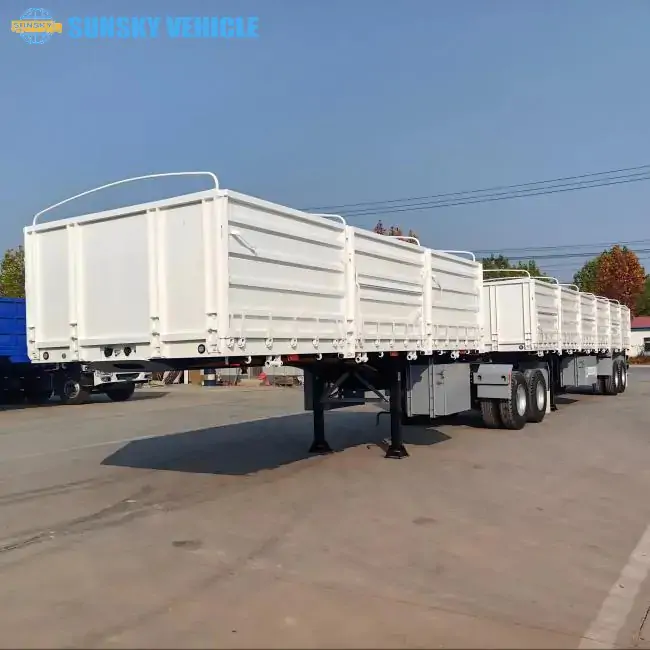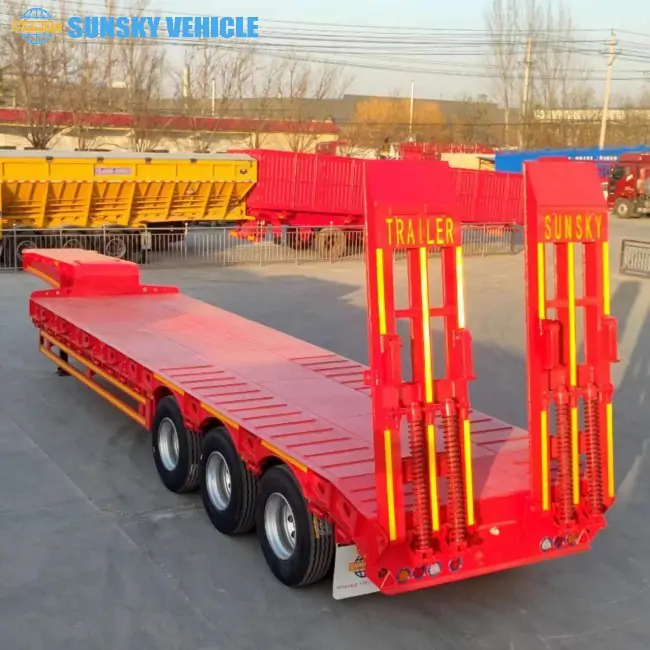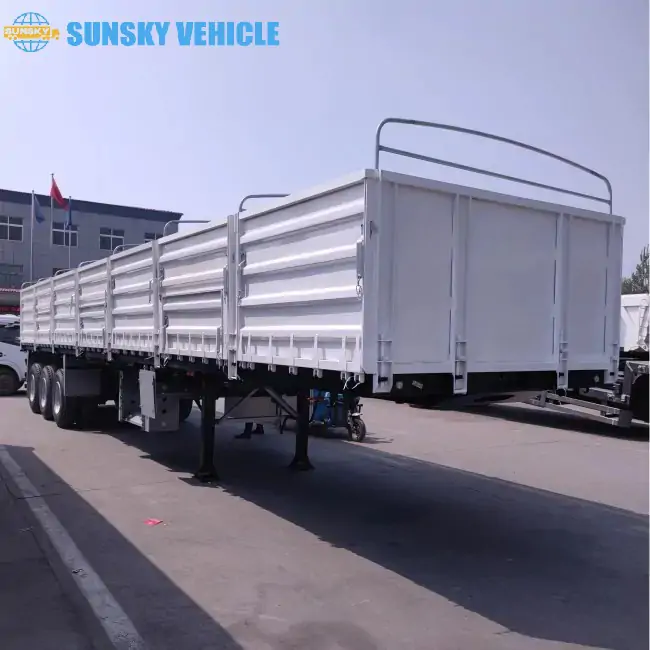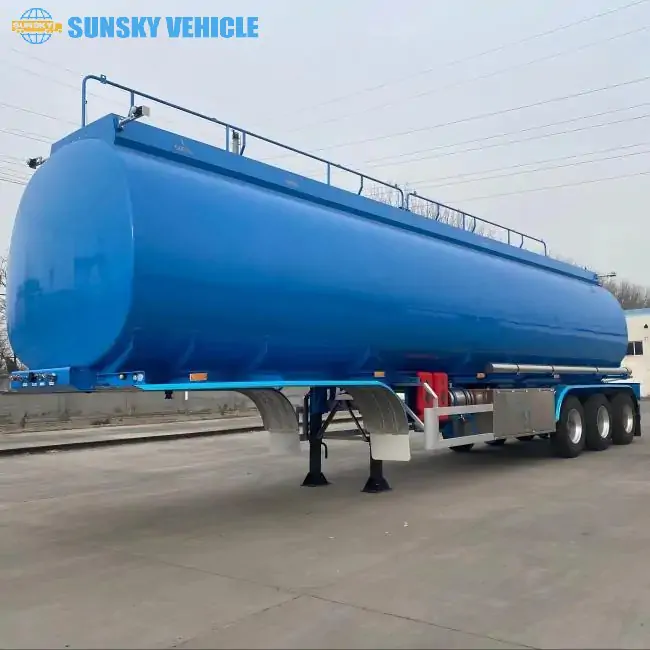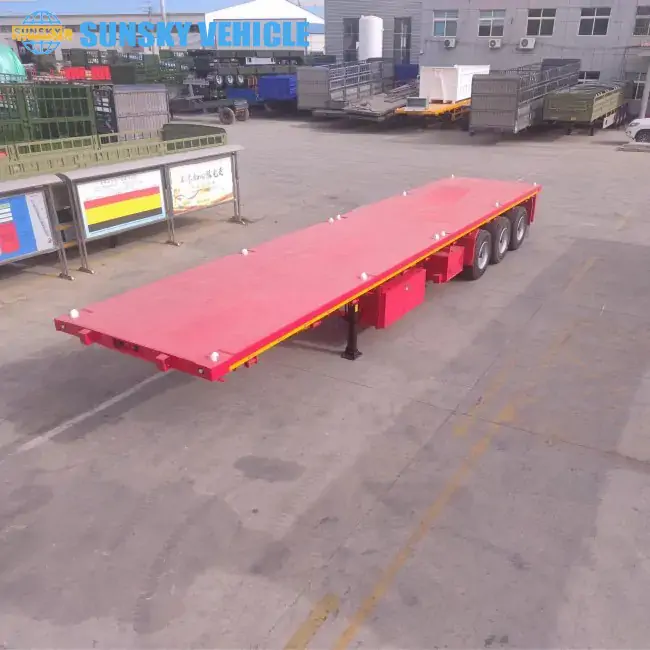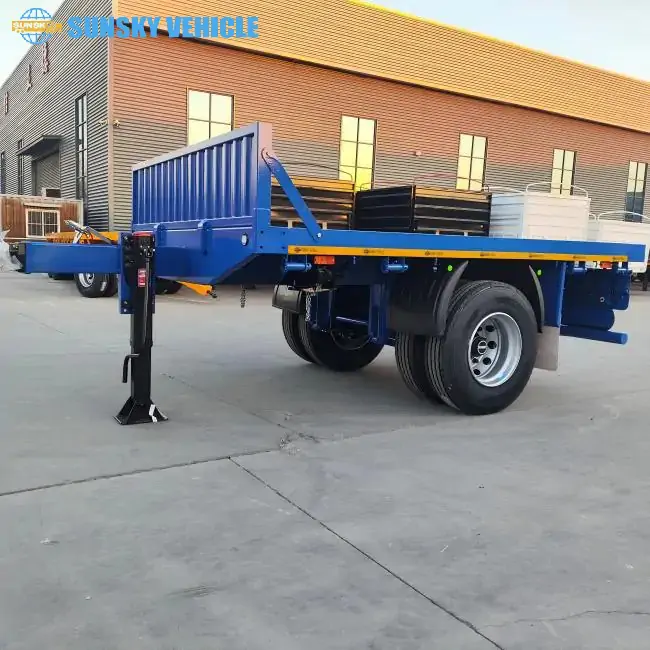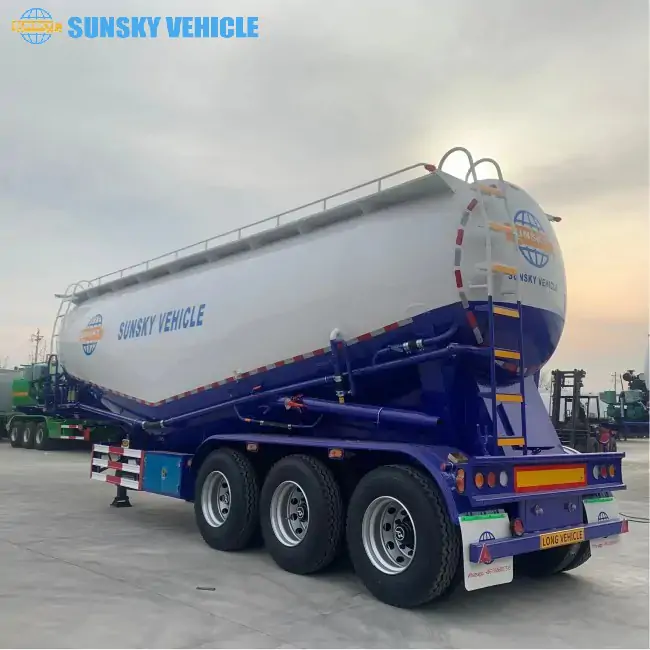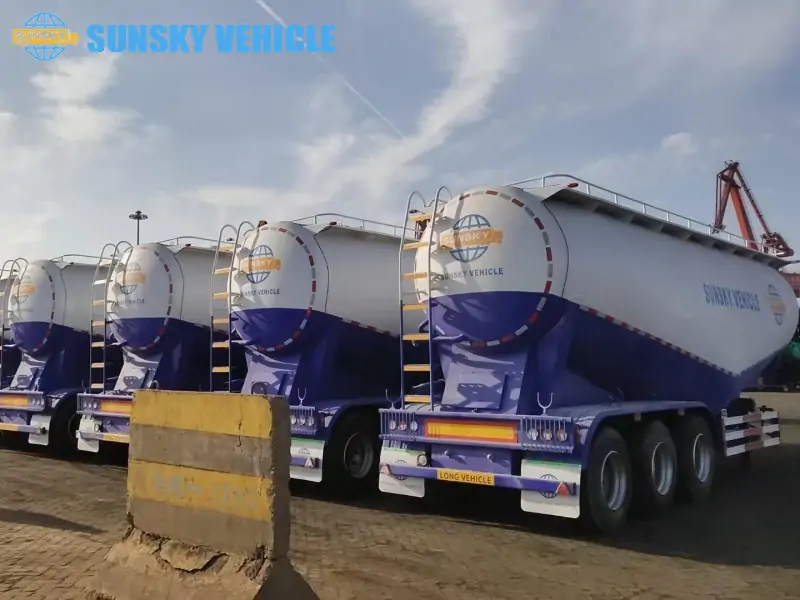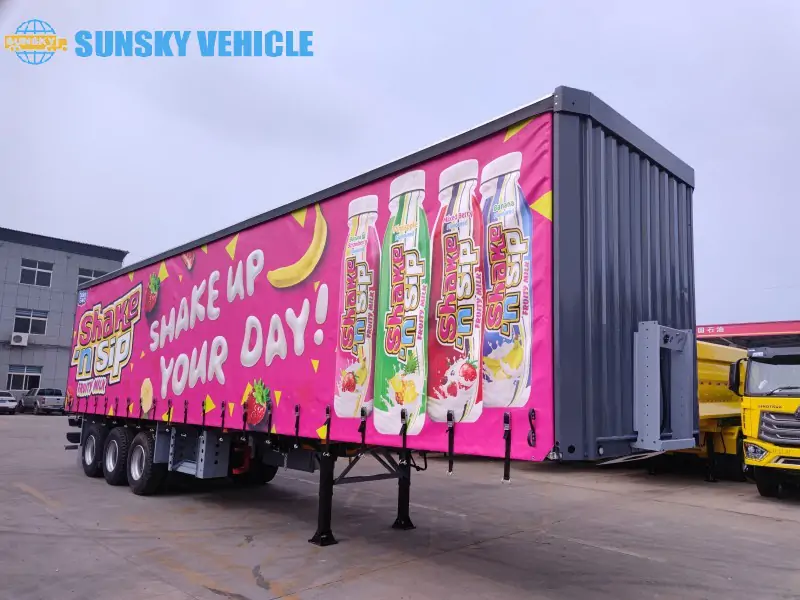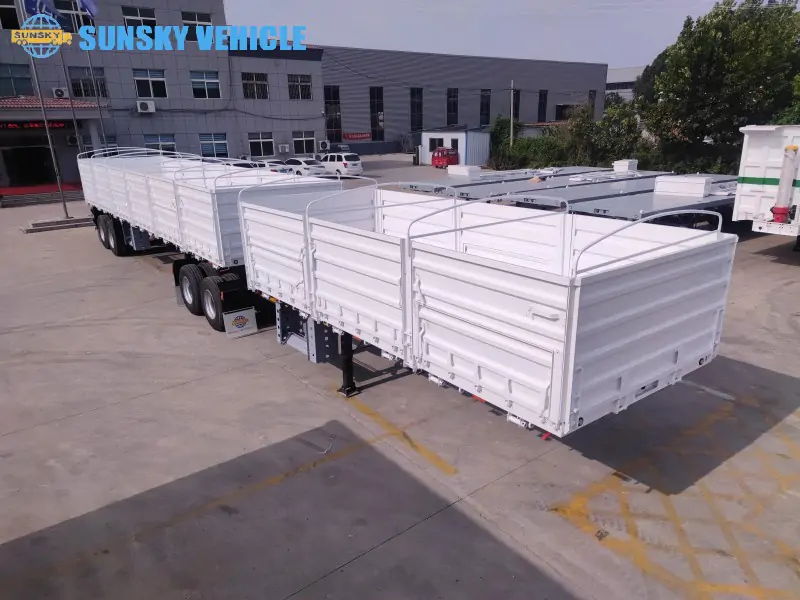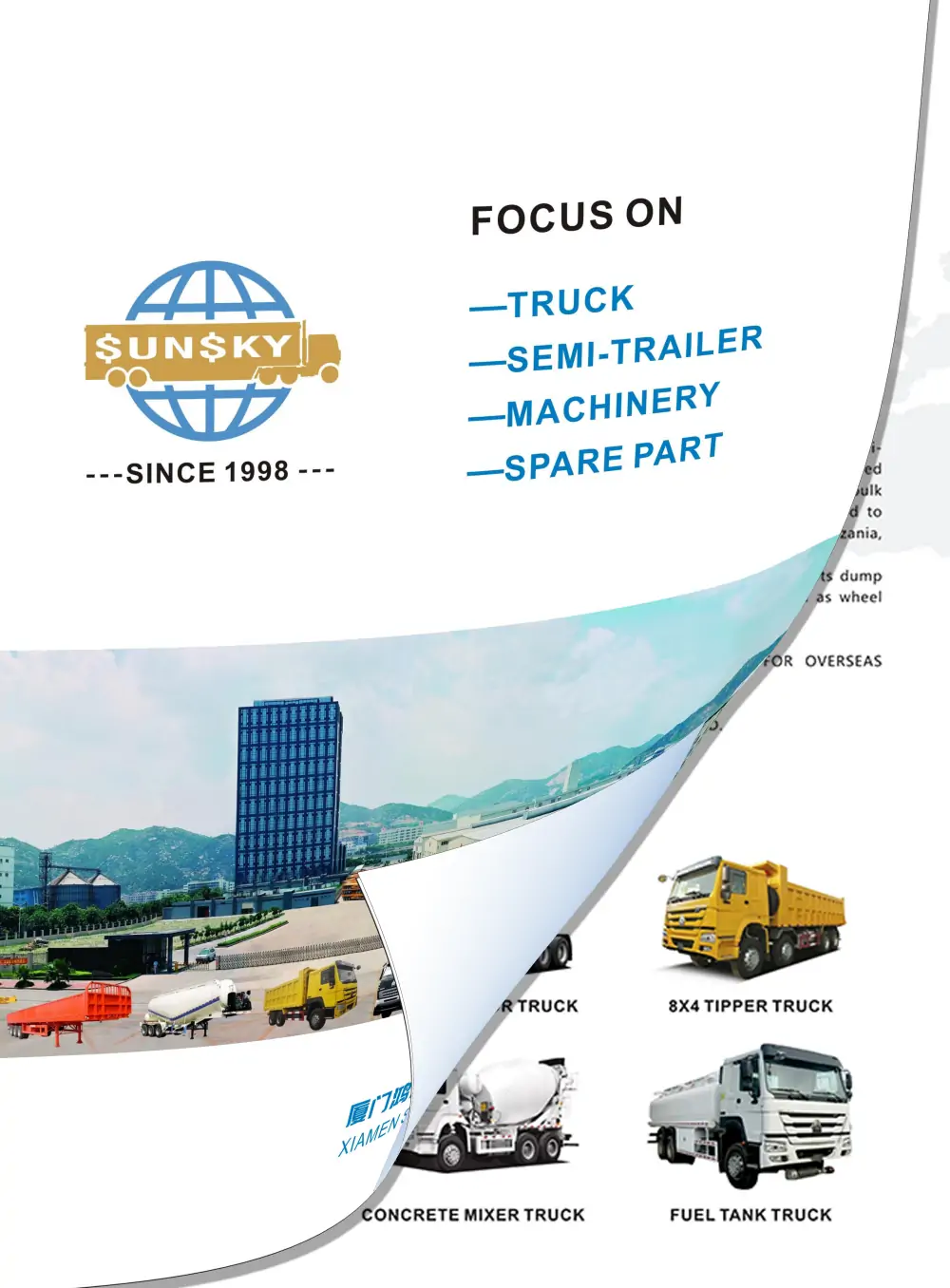
skeleton trailer
Made of sturdy low-carbon alloy Q355B steel, our skeleton trailers are designed for strength and versatility. They can easily transport 20ft, 40ft, and other-sized containers. Make the delivery of your cargo a breeze!
What is a skeleton trailer?
Skeleton trailer, as the name implies, is a special semi-trailer with an extremely streamlined structure. Its design is similar to a skeleton, consisting only of a high-strength steel frame, axles and necessary connecting supports, and is designed to transport various international standard containers (ISO Container) efficiently and safely. This minimalist design gives it a significant lightweight advantage, effectively reducing its own weight, thereby greatly increasing the payload of transportation, reducing fuel consumption per single transportation, and bringing better economic benefits to logistics operators.
Skeleton trailers use twist locks (Twist Locks) precisely installed on the top to firmly lock the corner fittings of the container, ensuring that the container is as stable as a mountain at high speeds and complex road conditions. Its design is highly flexible and can perfectly adapt to and transport a variety of standard container sizes commonly seen in the market, including but not limited to:
20ft container: The most basic short-distance transportation unit.
40ft container: The most common long-distance transportation unit.
45ft container: Used for larger capacity cargo transportation.
Chassis trailer application scenarios

Intermodal Transportation / Container Haulage: This is the most common and primary use. Skeleton trailers are the backbone of intermodal logistics, connecting different modes of transport (ship, rail, road).

Port and Terminal Operations: Within port areas, skeleton trailers are essential for moving containers efficiently between stacking yards, quaysides (for loading/unloading from ships), and customs inspection points.

Logistics and Supply Chain Management: Companies involved in importing and exporting goods that utilize containerized shipping rely heavily on skeleton trailers to get products from the port of entry to their final destination or vice-versa.
Standard configuration
-
SUNSKY axle
-
12R22.5 Tires
-
LED light system
-
standard 20/40 feet
-
surface paint process
-
Leaf spring suspension
-
12-lock mid-container design
Customizable options
-
water tank
-
plastic bracket
-
Auxiliary fuel tank
-
Number of locks: 4/8/12
-
standard style/gooseneck style
-
Rear tailgate container door baffle
-
BPW/Triangle/FUWA axles as needed
Looking for some new designs ?
skeleton trailer detail design

The main frame comprises Q355B high-tensile steel, a reasonable structure, superior carrying capacity, and no permanent deformation.

Heavy loading 19-Inch Two-speed landing gear, strong Side fence to protect the trailer

Lighting system, tail lamp shade–Prevent damage to the lights from foreign objects such as gravel.

Low maintenance cost and long lifespan axle, steel material mudguard to protect the trailer.
Video of skeleton trailer
45ft Gooseneck Container Trailer
3-axle skeleton Trailer
20FT Chassis Container Trailer
40FT Container Trailer
The trailer type you are looking for is not found
FAQ
What is the primary purpose and application of a skeletal trailer?
A skeleton trailer, also widely known as a container chassis or skeletal trailer, is specifically designed for the highly efficient transport of ISO (International Standards Organization) shipping containers. Its unique open-frame design, lacking a traditional solid deck, allows it to securely cradle and lock containers of various standard lengths (e.g., 20ft, 40ft, 45ft, even 53ft). The primary application is in intermodal transportation, where these trailers seamlessly move containers between ports, rail terminals, and inland distribution centers, forming the crucial road link in the global supply chain for containerized cargo.
How does a container chassis securely attach and transport standard shipping containers?
The security of container transport on a container chassis relies on specialized locking mechanisms called twist locks. These robust, standardized devices are located at each corner of the chassis frame, aligning precisely with the corner castings of the shipping container. Once the container is lowered onto the chassis, the operator manually rotates the twist locks (or in some advanced models, pneumatically activates them) to engage and securely fasten the container, preventing any movement or dislodgement during transit, even over rough terrain or during sudden maneuvers. This ensures the cargo remains stable and safe from origin to destination.
What are the key advantages of using a skeletontrailer for intermodal logistics?
Utilizing a skeletal trailer offers significant advantages in intermodal logistics:
Optimized Payload: Its minimalist “skeleton” design results in a lighter tare (empty) weight, allowing for a higher payload capacity of the container and its contents, maximizing transport efficiency.
Seamless Transfer: Designed specifically for containers, it enables rapid and secure loading/unloading operations at ports and rail yards, minimizing turnaround times.
Cost-Effectiveness: By allowing goods to remain sealed within their containers from origin to destination across different transport modes, it reduces handling costs, minimizes cargo damage, and enhances supply chain security.
Versatility: Many intermodal trailer designs are extendable or have adjustable twist lock positions to accommodate multiple container sizes (e.g., one 40ft or two 20ft containers), offering operational flexibility.
Are there different configurations of container haulers available for varying container sizes or specialized needs?
Yes, container haulers come in various configurations to meet diverse operational demands:
Fixed Chassis: Designed for a specific container length (e.g., dedicated 20ft or 40ft).
Extendable Chassis: Feature a sliding frame that can extend to accommodate different container lengths, offering greater versatility (e.g., adjusting for 20ft, 40ft, and 45ft containers).
Gooseneck Chassis: Some designs incorporate a specific gooseneck shape to lower the center of gravity, particularly beneficial for transporting heavy or tall containers like tank containers.
Tri-Axle or Multi-Axle Chassis: For heavier loads or adherence to specific axle weight regulations, these specialized container carriers are equipped with additional axles to distribute weight more effectively.
Superlink/B-Double Combinations: In some regions (like parts of Africa or Australia), multiple skeletal trailers can be linked together to form a “Superlink” or “B-Double” configuration, allowing for massive increases in payload capacity.
What kind of maintenance is typically required for an intermodal trailer to ensure its longevity and performance?
While an intermodal trailer is built for durability, regular maintenance is crucial for longevity and peak performance. Key maintenance aspects include:
Routine Inspections: Daily visual checks for damage, loose components, tire condition, and brake functionality.
Tire Care: Maintaining correct tire pressure, checking for wear patterns, and regular rotation.
Brake System Checks: Ensuring proper function of air lines, brake chambers, slack adjusters, and brake shoes/pads.
Twist Lock Maintenance: Lubricating and inspecting twist locks for smooth operation and secure locking.
Chassis Structure Inspection: Checking the main frame, cross-members, and welds for cracks or fatigue, especially around high-stress areas.
Suspension System Maintenance: Lubricating spring hangers and checking air bag integrity (for air suspension).
Electrical System: Verifying lights, wiring, and ABS sensors. Following manufacturer guidelines and scheduled servicing wil
Connect with us
Ready to partner? We’re convinced Sunsky Vehicle is your best choice! Reach out through the form or by phone.

*Our team will answer your inquiries within 24 hours.
*Your information will be kept strictly confidential.

